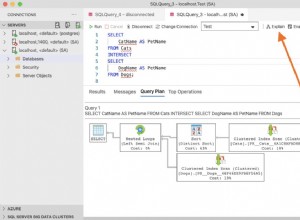Aqui está uma consulta que lhe dará isso e muito mais (veja
WHERE cláusula para o nome do proc armazenado):SELECT
[sJOB].[job_id] AS [JobID]
, [sJOB].[name] AS [JobName]
, [sJSTP].[step_uid] AS [StepID]
, [sJSTP].[step_id] AS [StepNo]
, [sJSTP].[step_name] AS [StepName]
, CASE [sJSTP].[subsystem]
WHEN 'ActiveScripting' THEN 'ActiveX Script'
WHEN 'CmdExec' THEN 'Operating system (CmdExec)'
WHEN 'PowerShell' THEN 'PowerShell'
WHEN 'Distribution' THEN 'Replication Distributor'
WHEN 'Merge' THEN 'Replication Merge'
WHEN 'QueueReader' THEN 'Replication Queue Reader'
WHEN 'Snapshot' THEN 'Replication Snapshot'
WHEN 'LogReader' THEN 'Replication Transaction-Log Reader'
WHEN 'ANALYSISCOMMAND' THEN 'SQL Server Analysis Services Command'
WHEN 'ANALYSISQUERY' THEN 'SQL Server Analysis Services Query'
WHEN 'SSIS' THEN 'SQL Server Integration Services Package'
WHEN 'TSQL' THEN 'Transact-SQL script (T-SQL)'
ELSE sJSTP.subsystem
END AS [StepType]
, [sPROX].[name] AS [RunAs]
, [sJSTP].[database_name] AS [Database]
, [sJSTP].[command] AS [ExecutableCommand]
, CASE [sJSTP].[on_success_action]
WHEN 1 THEN 'Quit the job reporting success'
WHEN 2 THEN 'Quit the job reporting failure'
WHEN 3 THEN 'Go to the next step'
WHEN 4 THEN 'Go to Step: '
+ QUOTENAME(CAST([sJSTP].[on_success_step_id] AS VARCHAR(3)))
+ ' '
+ [sOSSTP].[step_name]
END AS [OnSuccessAction]
, [sJSTP].[retry_attempts] AS [RetryAttempts]
, [sJSTP].[retry_interval] AS [RetryInterval (Minutes)]
, CASE [sJSTP].[on_fail_action]
WHEN 1 THEN 'Quit the job reporting success'
WHEN 2 THEN 'Quit the job reporting failure'
WHEN 3 THEN 'Go to the next step'
WHEN 4 THEN 'Go to Step: '
+ QUOTENAME(CAST([sJSTP].[on_fail_step_id] AS VARCHAR(3)))
+ ' '
+ [sOFSTP].[step_name]
END AS [OnFailureAction]
FROM
[msdb].[dbo].[sysjobsteps] AS [sJSTP]
INNER JOIN [msdb].[dbo].[sysjobs] AS [sJOB]
ON [sJSTP].[job_id] = [sJOB].[job_id]
LEFT JOIN [msdb].[dbo].[sysjobsteps] AS [sOSSTP]
ON [sJSTP].[job_id] = [sOSSTP].[job_id]
AND [sJSTP].[on_success_step_id] = [sOSSTP].[step_id]
LEFT JOIN [msdb].[dbo].[sysjobsteps] AS [sOFSTP]
ON [sJSTP].[job_id] = [sOFSTP].[job_id]
AND [sJSTP].[on_fail_step_id] = [sOFSTP].[step_id]
LEFT JOIN [msdb].[dbo].[sysproxies] AS [sPROX]
ON [sJSTP].[proxy_id] = [sPROX].[proxy_id]
WHERE [sJSTP].[command] LIKE '%MyStoredProc%'
ORDER BY [JobName], [StepNo]
O crédito deve ir para o artigo Consultando o SQL Server Agent Informações do trabalho por Dattatrey Sindol para a maior parte da consulta acima.




